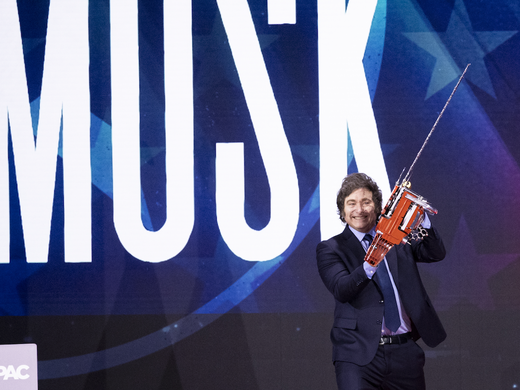On May 26, 2015, Brazil and Mexico signed an investment protection agreement. The agreement, called Cooperation and Facilitation of Investment Agreement (CFIA), aims at “facilitating and promoting” investments between the two countries (UNCTAD 2015a, Article 1). Brazil and Mexico are Latin America’s two largest economies and both share an uneasy relation with investment protection measures. Neither country is a signatory of the International Centre for Settlement of Investment Disputes (ICSID) Convention (ICSID 2015) and they both share a protectionist past. However, while Mexico embraced the Washington Consensus, opening the Mexican economy to the world and abandoning protectionism, Brazil has refused to follow the trend, signing few investment agreements and sticking with protectionist policies (Camargo Mendes 2012). The two countries have starkly different approaches to international investment agreements (IIAs): while Mexico has 28 bilateral investment treaties (BITs) in force, Brazil has signed 14 BITs but none are in force (UNCTAD 2015b).
This new treaty, however, may be signalling a change in Brazil’s position. The CFIA with Mexico is the third that Brazil adopts this year, after signing one with Mozambique in March and another with Angola in April. On June 29, Brazilian President Dilma Rousseff was in Washington asking for American investment and recognizing “the need to reduce the risks of doing business in Brazil” (Trevisani 2015, paragraph 4). Part of the explanation for this change may reside in how differently the Brazilian and the Mexican economies have evolved. One study indicates that between 1993 (the year before NAFTA came into effect) and 2013, US imports from Mexico have grown 603 percent, allowing Mexico to diversify its exports and freeing it from the volatility of the commodities market. According to this study, only two of Mexico’s top 10 exports are commodities, while nine out of the top 10 Brazilian exports are commodities (Wharton School 2015). This could suggest that the Mexican approach was more successful than Brazil’s, particularly as commodity prices have plummeted (CNN Money 2015).
This could be, however, an oversimplification of the effects of trade and investment agreements on foreign direct investment (FDI) and economic growth. A survey of studies on the matter by the United Nations Conference on Trade and Development (UNCTAD) found that merely signing an IIA does not make a difference. The content of IIAs — such as clear wording and strong investment protection measures— is much more likely to have an impact in attracting FDI. More importantly, the UNCTAD survey found that, across the various studies, there is near unanimity that domestic conditions are closely studied by international investors before making a decision to invest. Therefore, an IIA, in and of itself, may not make much of a difference (UNCTAD 2014). This seems to be the case even for NAFTA; the US Congressional Budget Office examined the effects of NAFTA in 2003, and found that “[c]hanges in trade between the United States and Mexico since NAFTA went into effect have been determined primarily by factors other than the agreement” (US Congress 2003, 17).
As for the first condition identified in the survey, the content of IIAs, it is unlikely that investors will be very impressed with Brazil’s recent CFIAs. The agreement with Mexico, for instance, does not cover indirect expropriations (Article 6 covers only direct expropriations), nor does it include the fair and equitable treatment principle, which are standard provisions in the Mexican model BIT (Articles 4 and 6). The same can be said for the CFIAs that Brazil signed with Mozambique (UNCTAD 2015c) and Angola (UNCTAD 2015d); Article 9 in both agreements covers direct expropriation. More importantly, Brazil’s CFIAs do not contemplate investor-state arbitration to solve investment disputes, which is also a standard provision in the Mexican model BIT (Article 12). Instead, the Brazil-Mexico CFIA offers two different avenues through which controversies can be resolved: the Joint Committee for the Administration of the Agreement (Article 18.2) and state to state arbitration (Article 19). The first avenue is designed to prevent conflicts from escalating by resolving them amicably between the parties, without the intervention of an arbitrator. Both procedures have to be initiated by a state representative and, “if possible” (Article 18.3[c]), the joint committee allows for direct participation of the investor. The CFIA also contemplates the creation of “ombudsmen,” one for each country and composed by state officials (Article 15.2-3), which can also “mitigate and facilitate” the resolution of conflicts (Article 15.4[c]); however, their specific functions are not very clear in the text of the agreement.
As for the second condition, the domestic environment, Brazil’s economic policies, based on strong state interventionism, have not stopped its GDP from contracting and inflation from rising (Latin American Herald Tribune 2015). In addition, corruption scandals have created great political instability in Brazil (Phillips 2015). In contrast, Mexico has fully embraced the liberalization of its economy, even opening its oil industry to private investors — a highly sensitive topic for Mexicans (Iliff 2014). However, corruption, crime and political turmoil are also red flags for Mexico, which could hamper the effects of its more liberal economic policies (PBS Newshour 2015).
There has been much discussion about the future of IIAs, including proposals to improve their wording. However, Brazil exemplifies the kind of obstacles faced by policymakers engaged in these efforts; that is, on one hand, states want to attract investments by making promises to investors in these agreements while on the other hand, they make those promises vague so as to not tie their hands.
It is unclear whether Brazil’s recent overtures to international investors will be successful. If Brazil is not willing to embrace IIAs with the standards that international investors currently expect, these lukewarm CFIAs will not do the trick. In the end, it might not make that much of a difference either way; research shows that economic and political stability are necessary preconditions to attract FDI and improve economic growth. There are indications that Rousseff is taking the necessary steps to put Brazil’s economy back on track (Boadle 2015). Given the current level of political instability, however, the jury is still out regarding how successful she will be.
Works Cited
Boadle, Anthony. 2015. “Brazil Leader’s Credibility Tested as She Woos U.S. Investment.” Reuters, June 24. www.reuters.com/article/2015/06/24/us-brazil-rousseff-idUSKBN0P425U20150624.
Camargo Mendes, Ricardo. 2012. “Trade: Brazil’s New Protectionist Agenda.” Quarterly Americas, Winterwww.americasquarterly.org/node/3288.
CNN Money. 2015. “Brazil once had an All-Star economy. Now America is the stud.” CNN Money, June 30. http://money.cnn.com/2015/06/30/news/economy/brazil-us-economic-divide/.
ICSID. 2015. List of Members. https://icsid.worldbank.org/apps/ICSIDWEB/icsiddocs/Pages/List-of-Member-States.aspx.
Iliff, Laurence. 2014. “Mexico's Energy Reform Gives Birth to New Private Oil Company.” The Wall Street Journal, October 1. www.wsj.com/articles/mexicos-energy-reform-gives-birth-to-new-private-oil-company-1412191958.
Latin American Herald Tribune. 2015. “Analysts Forecast 1.49% Contraction for Brazil Economy.” Latin American Herald Tribune, June 30. www.laht.com/article.asp?CategoryId=14090&ArticleId=2391310.
PBS Newshour. 2015. “Mexico’s President Peña Nieto faces ‘perfect storm’ of problems, derailed reform agenda.” PBS Newshour, January 6. www.pbs.org/newshour/bb/mexicos-president-nieto-faces-perfect-storm-problems-derailed-reform-agenda/.
Phillips, Dom. 2015. “Unpopular Brazilian president to visit U.S. as her country’s economy slides.” The Washington Post, June 28. www.washingtonpost.com/world/the_americas/unpopular-brazilian-president-to-visit-us-as-her-countrys-economy-slides/2015/06/28/43c9ccf8-1b7b-11e5-bed8-1093ee58dad0_story.html.
Trevisani, Paulo. 2015. “Brazil’s President Seeks Investment During U.S. Visit.” The Wall Street Journal, June 29. www.wsj.com/articles/brazils-president-seeks-investment-during-u-s-visit-1435587543.
UNCTAD. 2008. Mexican Model of Investment Promotion and Protection Agreement. December. http://investmentpolicyhub.unctad.org/Download/TreatyFile/2860.
UNCTAD. 2014. Issues Note: The Impact of International Investment Agreements on Foreign Direct Investment: An Overview of Empirical Studies 1998–2014.Working Draft. http://investmentpolicyhub.unctad.org/Upload/Documents/unctad-web-diae-pcb-2014-Sep%2024.pdf.
UNCTAD. 2015a. Acuerdo de Cooperación y de Facilitación de las Inversiones entre la República Federativa del Brasil y los Estados Unidos Mexicanos. http://investmentpolicyhub.unctad.org/Download/TreatyFile/3459.
UNCTAD. 2015b. International Investment Agreements Navigator: Brazil/Mexico. http://investmentpolicyhub.unctad.org/IIA.
UNCTAD. 2015c. Acordo de Cooperação e Facilitação de Investimentos entre o Governo Da República Federativa Do Brasil e o Governo Da República De Moçambique. http://investmentpolicyhub.unctad.org/Download/TreatyFile/3352.
UNCTAD. 2015d. Acordo de Cooperação e Facilitação de Investimentos entre o Governo Da República Federativa Do Brasil e o Governo Da República De Angola. http://investmentpolicyhub.unctad.org/Download/TreatyFile/3351.
US Congress. 2003. The Effects of NAFTA on U.S.-Mexican Trade and GDP. Congressional Budget Office. www.cbo.gov/sites/default/files/cbofiles/ftpdocs/42xx/doc4247/report.pdf.
Wharton School of the University of Pennsylvania. 2015. “Latin America in 2015: Manufacturing Aces, Commodity Bases and Basket Cases.” Knowledge@Wharton, January 9. http://knowledge.wharton.upenn.edu/article/latin-america-in-2015-growth-for-some-trouble-for-others/.


